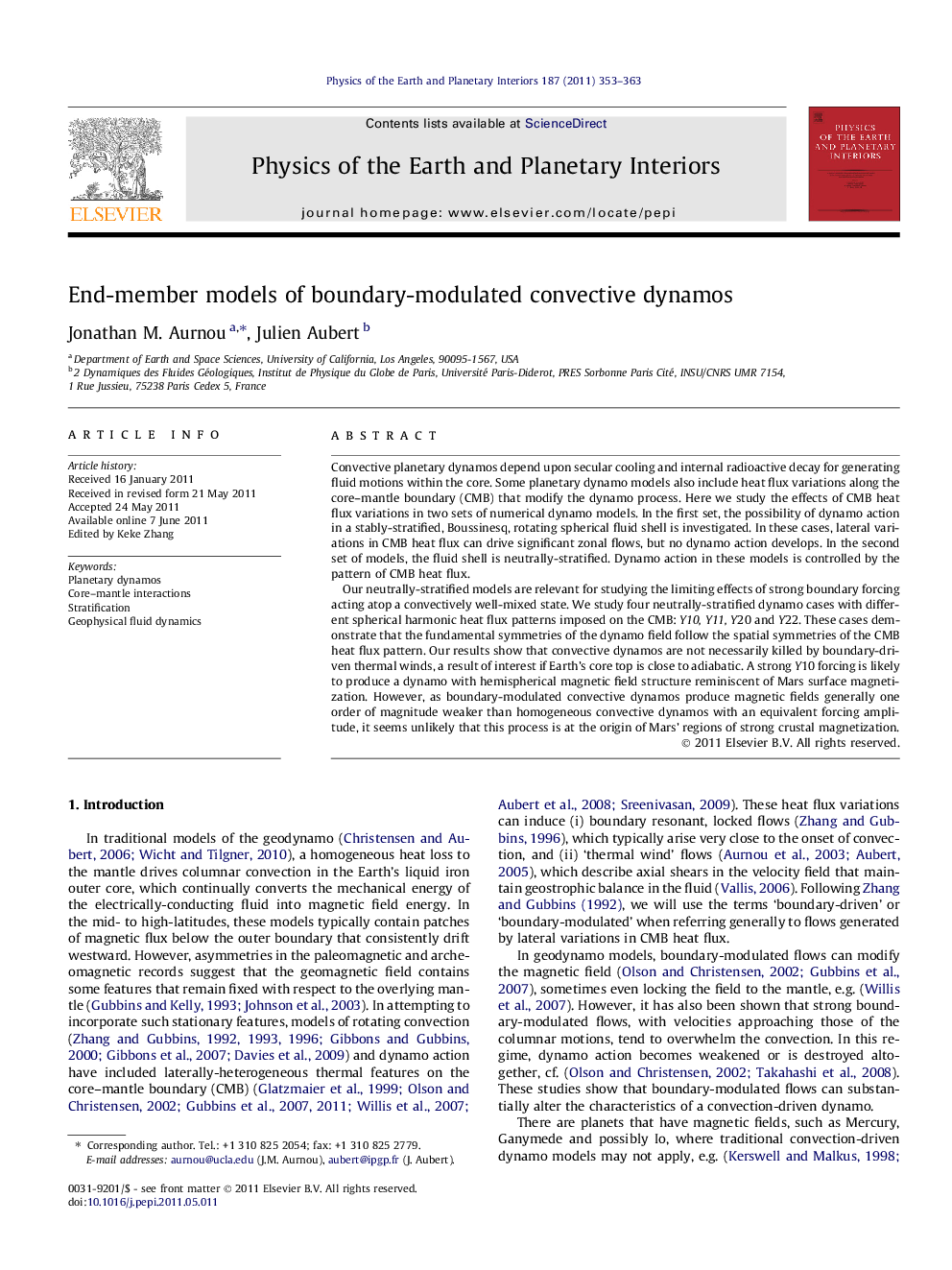| Article ID | Journal | Published Year | Pages | File Type |
|---|---|---|---|---|
| 4741987 | Physics of the Earth and Planetary Interiors | 2011 | 11 Pages |
Convective planetary dynamos depend upon secular cooling and internal radioactive decay for generating fluid motions within the core. Some planetary dynamo models also include heat flux variations along the core–mantle boundary (CMB) that modify the dynamo process. Here we study the effects of CMB heat flux variations in two sets of numerical dynamo models. In the first set, the possibility of dynamo action in a stably-stratified, Boussinesq, rotating spherical fluid shell is investigated. In these cases, lateral variations in CMB heat flux can drive significant zonal flows, but no dynamo action develops. In the second set of models, the fluid shell is neutrally-stratified. Dynamo action in these models is controlled by the pattern of CMB heat flux.Our neutrally-stratified models are relevant for studying the limiting effects of strong boundary forcing acting atop a convectively well-mixed state. We study four neutrally-stratified dynamo cases with different spherical harmonic heat flux patterns imposed on the CMB: Y10, Y11, Y20 and Y22. These cases demonstrate that the fundamental symmetries of the dynamo field follow the spatial symmetries of the CMB heat flux pattern. Our results show that convective dynamos are not necessarily killed by boundary-driven thermal winds, a result of interest if Earth’s core top is close to adiabatic. A strong Y10 forcing is likely to produce a dynamo with hemispherical magnetic field structure reminiscent of Mars surface magnetization. However, as boundary-modulated convective dynamos produce magnetic fields generally one order of magnitude weaker than homogeneous convective dynamos with an equivalent forcing amplitude, it seems unlikely that this process is at the origin of Mars’ regions of strong crustal magnetization.
► We model boundary-driven dynamos in neutrally- and stably-stratified fluid shells. ► In our simulations, dynamo action is not generated in stably-stratified cases. ► In neutral cases, the boundary heating pattern controls the dynamo morphology. ► A hemispherical dynamo is generated by the Y10 heating pattern. ► However, its weak field cannot explain Mars’ remanent crustal magnetism.
